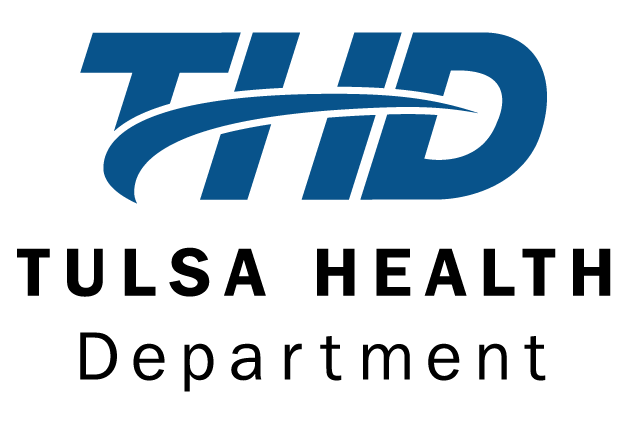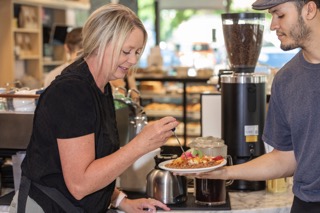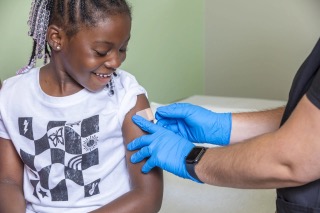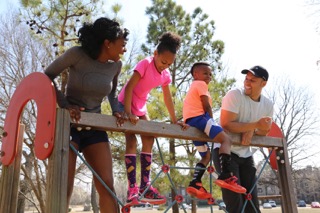The COVID-19 pandemic has been stressful and isolating for many people. Gatherings during the upcoming holidays can be an opportunity to reconnect with family and friends. This holiday season, consider how your holiday plans can be modified to reduce the spread of COVID-19 to keep your friends, families, and communities healthy and safe.
Unfortunately, the COVID-19 epidemic is worsening, and small household gatherings are an important contributor to the rise in COVID-19 cases. Public health officials offer the following considerations to slow the spread of COVID-19 during small gatherings.
Considerations for Small Gatherings of Family and Friends
Celebrating virtually or with members of your own household (who are consistently taking measures to reduce the spread of COVID-19) poses the lowest risk for spread. Your household is anyone who currently lives and shares common spaces in your housing unit (such as your house or apartment). This can include family members, as well as roommates or people who are unrelated to you. People who do not currently live in your housing unit, such as college students who are returning home from school for the holidays, should be considered part of different households. In-person gatherings that bring together family members or friends from different households, including college students returning home, pose varying levels of risk.
Organizers and attendees of larger events should consider the risk of virus spread based on event size (number of attendees and other factors) and take steps to reduce the possibility of infection, as outlined in the Considerations for Events and Gatherings.
There are several factors that contribute to the risk of getting and spreading COVID-19 at small in-person gatherings. In combination, these factors will create various amounts of risk:
Community levels of COVID-19 – High or increasing levels of COVID-19 cases in the gathering location, as well as in the areas where attendees are coming from, increase the risk of infection and spread among attendees. Family and friends should consider the number of COVID-19 cases in their community and in the community where they plan to celebrate when deciding whether to host or attend a gathering. Information on the number of cases in an area can often be found on the local health department website. Find stats on Tulsa County on our COVID-19 Data Page.
Exposure during travel – Airports, bus stations, train stations, public transport, gas stations, and rest stops are all places travelers can be exposed to the virus in the air and on surfaces.
Location of the gathering – Indoor gatherings, especially those with poor ventilation (for example, small enclosed spaces with no outside air), pose more risk than outdoor gatherings.
Duration of the gathering – Gatherings that last longer pose more risk than shorter gatherings. Being within 6 feet of someone who has COVID-19 for a cumulative total of 15 minutes or more greatly increases the risk of becoming sick and requires a 14-day quarantine.
Number and crowding of people at the gathering – Gatherings with more people pose more risk than gatherings with fewer people. CDC does not have a limit or recommend a specific number of attendees for gatherings. The size of a holiday gathering should be determined based on the ability of attendees from different households to stay 6 feet (2 arm lengths) apart, wear masks, wash hands, and follow state, local, territorial, or tribal health and safety laws, rules, and regulations.
Behaviors of attendees prior to the gathering – Individuals who did not consistently adhere to social distancing (staying at least 6 feet apart), mask wearing, handwashing, and other prevention behaviors pose more risk than those who consistently practiced these safety measures.
Behaviors of attendees during the gathering – Gatherings with more safety measures in place, such as mask wearing, social distancing, and handwashing, pose less risk than gatherings where fewer or no preventive measures are being implemented. Use of alcohol or drugs may alter judgment and make it more difficult to practice COVID-19 safety measures.
The following people should not attend in-person holiday gatherings:
People with or exposed to COVID-19
Do not host or participate in any in-person gatherings if you or anyone in your household
Has been diagnosed with COVID-19 and has not met the criteria for when it is safe to be around others
Has symptoms of COVID-19
Is waiting for COVID-19 viral test results
May have been exposed to someone with COVID-19 in the last 14 days
Is at increased risk of severe illness from COVID-19
Do not host or attend gatherings with anyone who has COVID-19 or has been exposed to someone with COVID-19 in the last 14 days.
People at increased risk for severe illness
If you are an older adult or person with certain medical conditions who is at increased risk of severe illness from COVID-19, or live or work with someone at increased risk of severe illness, you should avoid in-person gatherings with people who do not live in your household.
Level of Risk for Thanksgiving Activities
Holiday celebrations will likely need to be different this year to prevent the spread of COVID-19. Avoid activities that are higher risk for spread. Consider fun alternatives that pose lower risk of spreading COVID-19.
Lower risk activities
Having a small dinner with only people who live in your household
Preparing traditional family recipes for family and neighbors, especially those at higher risk of severe illness from COVID-19, and delivering them in a way that doesn’t involve contact with others
Having a virtual dinner and sharing recipes with friends and family
Shopping online rather than in person on the day after Thanksgiving or the next Monday
Watching sports events, parades, and movies from home
Moderate risk activities
Having a small outdoor dinner with family and friends who live in your community
Lower your risk by following CDC’s recommendations on hosting gatherings or cook-outs.
Visiting pumpkin patches or orchards where people use hand sanitizer before touching pumpkins or picking apples, wearing masks is encouraged or enforced, and people are able to maintain social distancing
Attending a small outdoor sports events with safety precautions in place
Higher risk activities
Avoid these higher risk activities to help prevent the spread of the virus that causes COVID-19:
Going shopping in crowded stores just before, on, or after Thanksgiving
Participating or being a spectator at a crowded race
Attending crowded parades
Attending large indoor gatherings with people from outside of your household
Using alcohol or drugs that may alter judgment and make it more difficult to practice COVID-19 safety measures.




